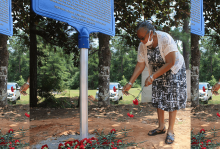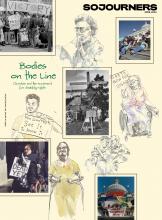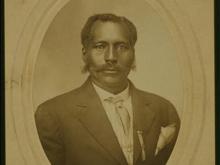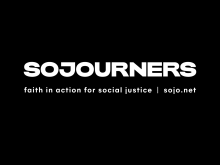equal justice initiative

THERE ARE TWO churches in Newton County, Miss., that bear the name “Good Hope.” The first, Good Hope Baptist Church, was founded by white slaveholders in the 1850s. At least 20 African Americans were members of that church, forced to worship God alongside those who kept them enslaved. After the Civil War, Black members of the church banded together to form an independent community, the Freedman Settlement of Good Hope. One of their first goals as emancipated people was to establish a church of their own. Against immeasurable odds, they founded Good Hope Missionary Baptist Church in 1908. But that same year, terror threatened to rip the nascent community apart. Three congregants—William Fielder, Dee Dawkins, and Frank Johnson—were brutally tortured and lynched by a mob of at least 50 white men. The three were targeted for being associated with a Black sharecropper accused of killing his white employer. The mob went on to wreak havoc on Black neighborhoods. Traumatized by the violence and faced with restrictive Black codes that preserved white supremacy in the South, many members of the Freedman Settlement of Good Hope fled north.
But their families’ connection to that sacred ground didn’t waver. For more than 100 years, on the first Saturday in August their descendants have travelled from across the U.S. to the church for a revival. They sing, pray, and gather for a fish fry and soul food. They share news about marriages, births, and deaths. They listen to sermons and care for the cemetery where their ancestors are buried. And most importantly, they remember.
Last August, descendants gathered at Good Hope Missionary Baptist Church in Newton County for another reason: to unveil a historical marker honoring the memories of Fielder, Dawkins, and Johnson. The marker describes the terror that was unleashed on their community and the failure of local law enforcement to hold anyone accountable for the deaths and the destruction of Black property. Darrell Fielder, the great-great-grandson of William Fielder, told Sojourners he believes Good Hope Missionary Baptist Church was the appropriate space for “resurrecting” the legacies of these three victims. “It is the one space where Black people could practice a liberating faith and speak in frank terms about injustices,” Fielder said. “In placing these markers on church ground, we are honoring these martyrs and letting them know that God was always with them.”

Disability rights sit-ins in the 1970s educated America and launched a civil rights movement. At the 45th anniversary, the church still lags behind.

THERE IS A short film embedded in the wall just to the left of the welcome desk in the lobby of the Equal Justice Initiative’s new Legacy Museum, which opened to the public on April 26. The first time I visited the museum, I stood in a crowd watching the video and tried to comprehend the story. An African-American girl clung to her father’s neck as he carried her, walking slowly toward white men standing in a field. The setting? The Antebellum South.
That film left me weeping—near wailing—right there in the lobby.
A few weeks later, I returned with participants on a weeklong pilgrimage through the history of the control of African bodies on U.S. soil. The journey—offered for continuing education and graduate credit through Greenville University—began in Montgomery, Ala., at the Legacy Museum. Each of the participants watched the video. One woman was so overwhelmed with grief that she had to leave the museum.
The Legacy Museum and the accompanying National Memorial for Peace and Justice shine light on details that have been hidden from us. They help us understand the humanity of the oppressed and the cruelty of slavery, Jim Crow, mass incarceration, and present-day police brutality.

MY THROAT STARTED to feel tight a few days before I went to Montgomery this April. I had been planning this pilgrimage to Alabama with my teen children for months but, as the days grew closer, I questioned my body’s ability to walk into the grief that was awaiting us at the Legacy Museum and National Memorial for Peace and Justice.
As a biracial African-American woman putting down roots in the rural South with my white husband and our four children, daily life can feel like an act of resistance. Every day we are faced with Confederate flags and memorials that celebrate an era and mindset that would have made our marriage and my equal ownership of our property a crime. But we love our home, the land, and our neighbors. We want, in the words of Gwendolyn Brooks, “to conduct [our] blooming in the noise and whip of the whirlwind.”
I was determined to bring my older children to the state of my birth, to take an unflinching look at our racist past and present, and to give them courage to walk the unfinished path toward justice. But still, I found it hard to breathe.
I gardened with a single-minded ferocity in the days before our trip, pulling weeds and digging up long taproots as though I could purge the evils from our land with my bare hands. Red dirt began to lodge deep beneath my nails and in the dry creases of my fingers, my forearms bore slashes from the thorny vines that whipped me as I tore them from the earth. There were flowers, thick with the hopeful scent of spring, trying to bloom beneath the tangle of weeds. I yanked and tore in every spare minute I had, stopping only when I noticed blood pouring from a deep slice on my right forefinger.
It felt right to come with dirty, bloodied hands into those sacred spaces in Montgomery.

Black faith leaders and social justice advocates are commemorating the lynching of Anthony Crawford, a man who owned 427 acres in Abbeville, S.C., when he was killed on Oct. 21, 1916.
He had been jailed after a dispute with a white store owner over the price of cottonseed. He was released, but was abducted by a large mob of white men and lynched, his body riddled with bullets.

People of color in the United States, particularly young black men, are burdened with a presumption of guilt and dangerousness. Some version of what happened to me has been unfairly experienced by hundreds of thousands of black and brown people throughout this country. As a consequence of our nation’s historical failure to address the legacy of racial inequality, the presumption of guilt and the racial narrative that created it have significantly shaped every institution in American society, especially our criminal justice system.

State officials in New York are reforming their policy of keeping people convicted of non-violent offenses in solitary confinement. Some hail the decision; others, including corrections officers, object, saying that solitary confinement is necessary to maintain control, and they say that keeping an individual in solitary confinement is not inhumane.
Tell that, though, to innocent people in prison, wrongly convicted, who find themselves in solitary confinement without hope of ever getting out.

Bryan Stevenson, the nation’s premier lawyer on mass incarceration and the death penalty, says slavery never ended. It just evolved.
I just spent two days with 50 other faith leaders at Stevenson’s Equal Justice Initiative in Montgomery, Ala., where Bryan emphasized four basic essentials for criminal justice reform in America: 1) Proximity to those most impacted, 2) Changing the narrative, 3) Hope replacing hopelessness, and 4) Committing ourselves to uncomfortable things, because injustice is never overcome by just doing comfortable things.

The United States has the highest incarceration rate in the world with 23 million behind bars. Bryan Stevenson of the Equal Justice Initiative, speaking from the Q Conference on Wedensday, said this high rate is inextricably tied to poverty, age, mental illness and race.
“In this country, the opposite of poverty is not wealth. The opposite of poverty is justice,” said Stevenson, a law professor at the New York University school of Law. “If we’re going to be concerned about ending poverty, we must be concerned about justice.”